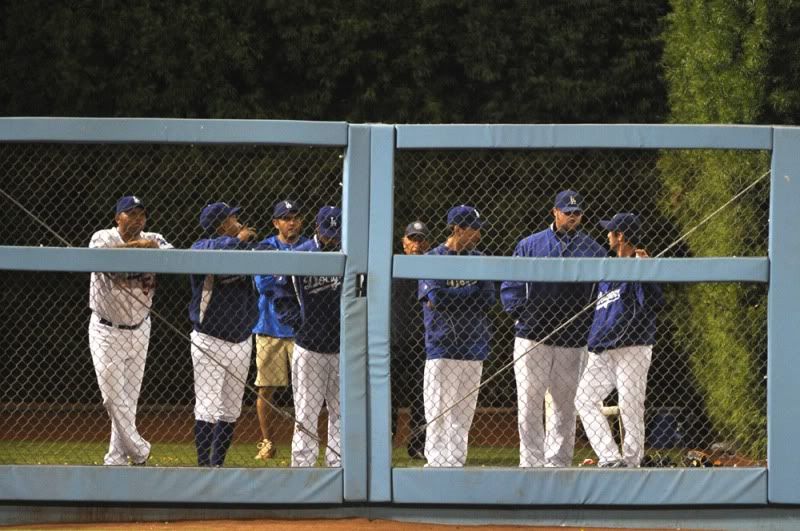 Today’s Bad Spring Training Decision of the Day is less of a decision and more of a cautionary tale. According to some sort of blend of real reporting and mere speculation, Buster Olney believes that the LA Dodgers might start the season with a pitching staff of not 11, not 12 but 13 pitchers.
Today’s Bad Spring Training Decision of the Day is less of a decision and more of a cautionary tale. According to some sort of blend of real reporting and mere speculation, Buster Olney believes that the LA Dodgers might start the season with a pitching staff of not 11, not 12 but 13 pitchers.
The Dodgers have quietly put together what could be a pretty good bullpen, with Javy Guerra, Kenley Jansen, Matt Guerrier, Mike MacDougal, Todd Coffey and others. It’s possible they will open the season with 13 pitchers on their roster — and it’s the flexibility of Jerry Hairston, who can play infield and outfield, that makes this a possibility.
As Olney states, the Dodgers have a plethora of talented relievers. What he doesn’t state is the reasoning behind wanting to carry so many extra relievers. Normally a team doubles down on their quantity of relievers to mask a deficiency in quantity, not to enhance it. The problem with having eight relievers on the active roster is that manager Don Mattingly, or any manager really, is going to feel compelled to use all of the relievers. That means voluntarily handing innings that could go to Guerra, Jansen or Guerrier over to the likes of journeyman Jamey Wright or some unproven prospect. This is a textbook case of where less is more, as in less other relievers on the staff means getting to use the better relievers more.
Of course, maybe that is what the Dodgers are worried about, taxing their relief staff. If that is the case, they must be really worried about some of their bullpen arms holding up to hefty workloads as a 12-man pitching staff has proven to be more than adequate at protecting overuse of relievers so long as the manager is smart about it.
But where this plan really falls apart is that it limits the Dodgers to just four bench players. The sheer nature of National League baseball alone makes this problematic as pinch-hitters and double-switches are an everyday occurrence. That can be awfully hard to pull of with only three substitutes at their disposal, presuming that Mattingly does what most managers do and always keeps his back-up catcher on the bench in case of emergency. If Don Mattingly has a need to use a substitute, he may not have a lot to work with when it comes to maximizing match-ups. And maximizing match-ups is something he will most certainly have to do. After Matt Kemp and Andre Ethier, the Dodgers lineup consists almost entirely of batters that one would strongly consider pinch-hitting for in late-game situations if there is a match-up worth exploiting. However, those pinch-hitters might not be available by the time those crucial late-game situations roll around.
The reason for that is the composition of the Dodgers’ starting rotation. They obviously have Clayton Kershaw, but the rest of the rotation is not exactly composed of what one would commonly consider to be innings eaters. Chad Billingsley, Ted Lilly, Aaron Harang and Chris Capuano all average almost exactly six innings per start. To get through games started by those four, the Dodgers are going to need two, three or even four relievers most games. That many relievers means using two or three pinch-hitters and defensive double-switches too, leaving precious little on the bench to call upon in the bottom of the eighth inning of a tied game and James Loney stuck having to face a quality left-handed reliever that everyone knows he is not going to be able to hit. But hey, at least the Dodger relievers won’t get overworked, right?
Yeah, not such a great idea is it? Hopefully the Dodgers won’t go through with it, assuming they even are considering it like Olney claims. If they do, they won’t be the first team to experiment with such an arrangement, and they won’t be the first team to find out first-hand that the arrangement isn’t nearly as beneficial as they hoped.
